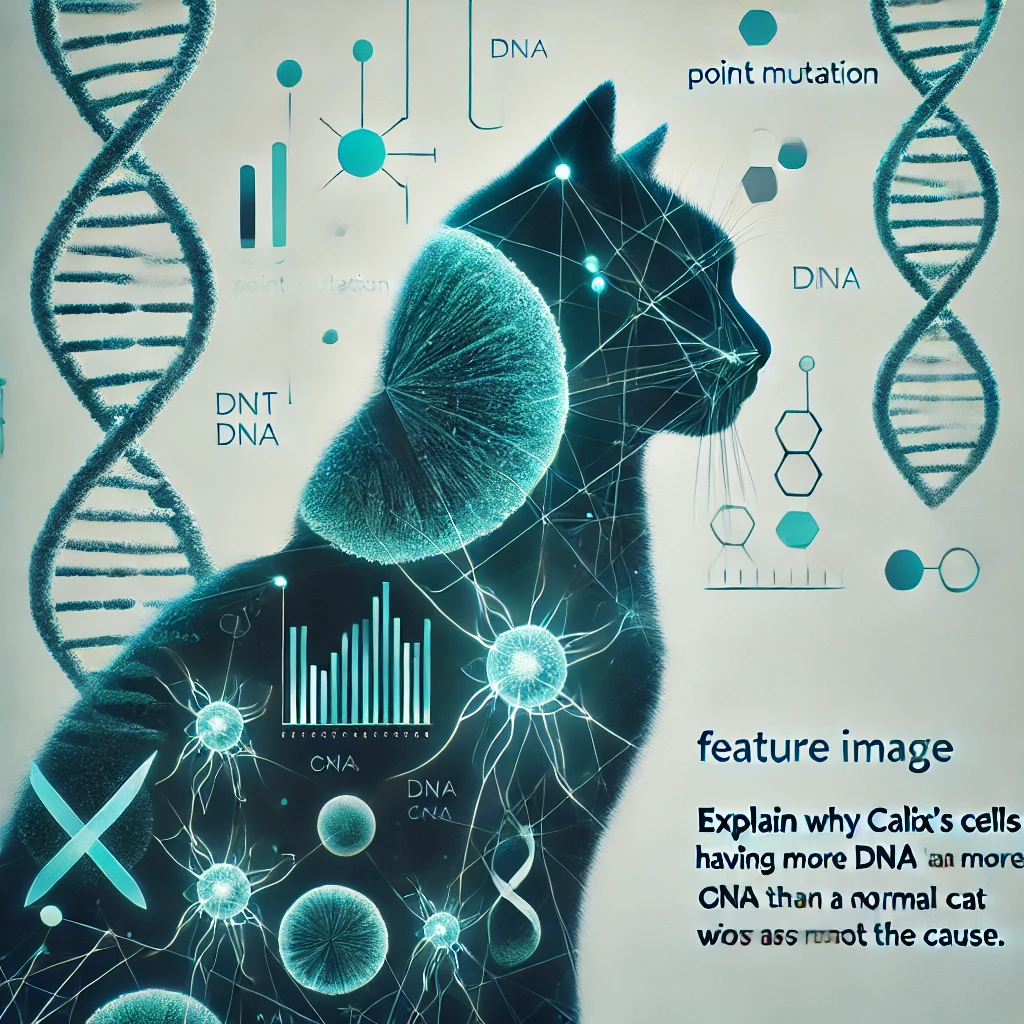Calix, an intriguing case in feline genetics, has cells containing more DNA than a normal cat. This finding rules out point mutations as the cause of the genetic anomaly. Let’s break down why.
What Is a Point Mutation?
A point mutation is a genetic alteration where a single nucleotide in the DNA sequence is replaced, inserted, or deleted. While these changes can lead to significant effects on gene function, they do not alter the overall quantity of DNA.
Why Was Point Mutation Ruled Out?
1. Increased DNA Content:
- Calix’s cells showed an excess amount of DNA, which cannot result from a point mutation. Point mutations change specific sequences but do not add or reduce the total DNA.
2. Possible Causes:
- The extra DNA suggests larger-scale genetic events, such as:
- Chromosomal Duplication: Entire chromosomes or large DNA segments are duplicated.
- Polyploidy: The presence of additional sets of chromosomes.
3. Implications:
- This anomaly points to broader genomic alterations rather than a localized mutation, aligning with observations of increased DNA.
Conclusion:
Calix’s cells containing more DNA than a normal cat eliminate point mutation as the cause, highlighting the role of large-scale genomic changes. This discovery underscores the complexity of genetic variation in animals.







